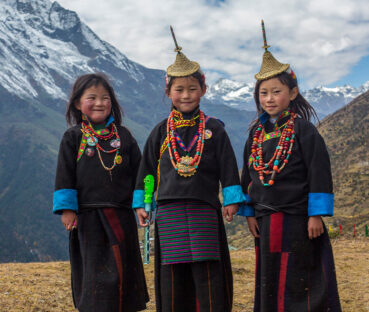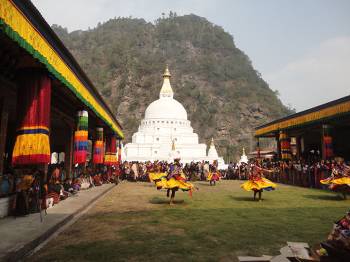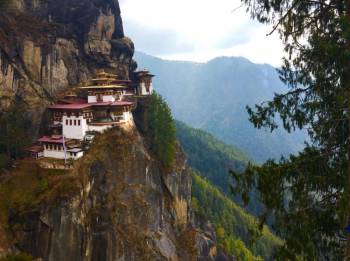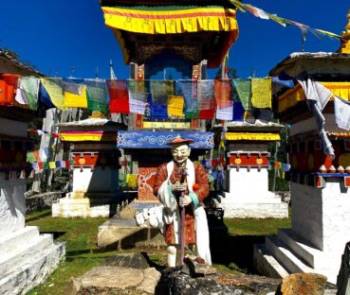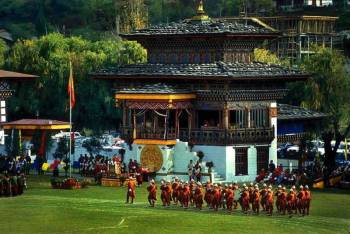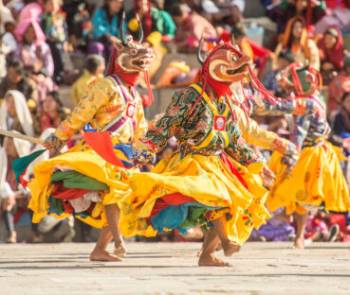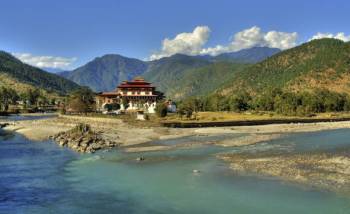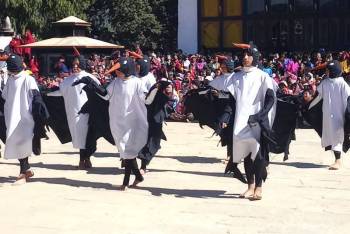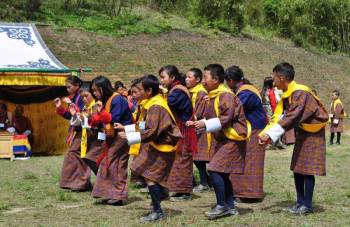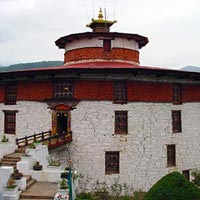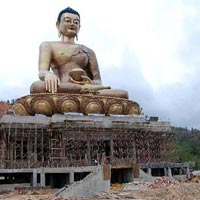- Thimphu
- +975-17747466
Bhutan Culture Tour 4 Night - 5 Days
Duration : 4 Nights / 5 Days
Destination Covered : Thimphu, Paro, Punakha
Tour Activities : Museums, Sightseeing
Tour Themes : Hill Stations & Valleys, Religious & Pilgrimage, Culture & Heritage
Price on Request
Thimphu, Paro and Punakha Tour Overview
An invitation to explore the intricacy of Bhutanese culture and heritage that is sure to leave an indelible mark on your heart.
Traditional Architecture
On the mountain tops, cliff faces and in the valleys of Bhutan, you will find ornately designed and crafted dzongs or fortresses, monasteries, and traditional houses. Adorned with colorful paintings and attention-demanding carvings, these architectural marvels are a peek into Bhutan’s unique craftsmanship.
These ancient fortresses are religious and administrative centers, holding significance in the Bhutanese culture with some housing sacred relics while others serve as hubs for community gatherings and religious activities.
Culture and Etiquette
The essence of Bhutanese culture stands on its respect for elders, reverence for nature, and a strong sense of community.
A established sense of belongingness and togetherness is seen in the community where respect is expressed by addition of “la” at the end of a sentence when talking to someone else irrespective of their age. Where a younger might address some older as "Aue," meaning elder sibling irrespective of their known relation.
Other manners of etiquette can be noted in every Bhutanese in everyday life. Embracing these cultural norms lets you get a feel of what it truly means to be a part of Bhutan.
Traditional Attire
Fabled to have the largest pocket in the world, the national dress of Bhutan known as Gho (for men) and Kira (for women) is an integral part of being a Bhutanese. These garments are a vibrant symbol of Bhutanese culture and tradition and are worn on all occasions, festivals, and even everyday life.
The gho is a knee-length robe adorned with intricate patterns, paired with knee-high socks and leather boots while the kira is an ankle-length dress wrapped elegantly around the body and often held together by a handwoven, traditional belt and complemented by a blouse and a colorful sash or rachu.
The Bhutanese attire showcases vibrant colors and patterns elaborately woven, passionately reflecting Bhutan’s diverse traditions and skilled craftsmanship. During the festivals and ceremonies, captivating jewelryembellishes the attire. The national dress of Bhutan is a timeless piece ofelegance that captivates the soul.
Colorful Festivals
Dotted all through the year in a Bhutanese calendar are its vibrant festivals called Tshechus.
Tshechus feature masked dances, traditional music, and elaborate rituals. It is an occasion for the community to come together and celebrate religious, spiritual, and historical milestones.
Bhutanese take it upon themselves to adorn themselves in the best ghosts and kiras. The entire event is a spectacle of vibrant colors, elaborate and ornate patterns, and communion.
Cuisine and Hospitality
A mix of everything Himalayan, the cuisine of Bhutan reflects the improvisation and adaption the Bhutanese made, giving birth to the rich palatal diversity.
You can savor spicy hot dishes like ema datsi (chili and cheese stew), snack on soft and plump momos (dumplings), or calm your nerves with suja (butter tea), while admiring the majestic landscapes of Bhutan and finding comfort in the warmth and hospitality of Bhutanese families and guesthouses.
Share a meal, a laugh or two, and endless memories.
Creativity
Despite its small size, Bhutan fosters a wide range of creativity. From traditional arts and crafts to modern arts and sculpting. From traditional masked dances to modern street dancers, we house it all.
More often than not, you can find yourself amidst a mix of traditional and modern art forms in the heart of Bhutan’s capital, Thimphu.
If you want a quiet time, you can take a stroll in one of the multiple art galleries and museums. You can meet the local artists at VAST (voluntary art studio Thimphu) and even share a drink or two.
If your dancing shoes are clacking, drop by the GOKAB studio and getgrooving with Bhutanese dancers.
If you ever need a creative break, come to Bhutan.
Thimphu, Paro and Punakha Tour Itinerary
Our guide and driver will receive you from the airport.
Visit Paro Dzong. It was built in 1646.
Visit Paro National Museum. It was established in 1968. National Museum has in its possession over 3,000 works of Bhutanese art, covering more than 1,500 years of Bhutan's cultural heritage.
Visit Kyichu Lhakhang. It was originally built in 7th century and Padmasambhava visited in 8th century.
Visit National Library of Bhutan. The National Library of Bhutan was established in 1967 under the patronage of HM Queen Ashi Phuntso Choden (1911–2003). It is responsible for collecting and preserving important past, present and future documents on Bhutan for future generations.
Visit The Memorial Chorten. It was built in 1974 to honor the Third Druk Gyalpo Jigme Dorji Wangchuk (1928-1972) and it is a prominent landmark in capital city of Bhutan.
Visit Buddha Dordenma Statue. It is largest Buddha Statue in the world with 177 feet (54 m) and contains 100,000 8-inch-tall and 25,000 12-inch-tall gilded bronze Buddhas.
Visit Motithang Takin Preserve: The takin is believed that the head of the goat is fixed it to the skeleton of the cow by the Divine Madman great Lam Drukpa Kuenlay. It is National Animal of Bhutan.
Visit Chimi Lhakhang. It was built in 1499 and it stands on a round hillock.
Visit Punakha Dzong. It was built in 1637 by Zhabdrung Ngawang Namgyel.
Visit Drukgyel Dzong. It was built in 1649. It was completely destroyed by fire in early 1950s. It was rebuilt and reinstated to its former glory in 2016.
More Details about Thimphu, Paro and Punakha Tour
Inclusions
- Accommodation in hotels as listed during the tour and in tents during the trek
- All three meals at designated restaurants or hotels
- Sightseeing with entrance fees
- Bhutan visa fee
- SDF (Sustainable Development Fees)
- We offer full support and assistance during your stay in Bhutan
Payments Terms
- * 20% Advance Percentage of total booking amount
Cancellation & Refund Policy
- * Upon cancellation, refund will be made after deducting the Retention Amount.

